SHED HUNTING STRATEGIES
Best timing and locations, along with tips and tricks to help you find more sheds
Owen Brick
1/28/20256 min read
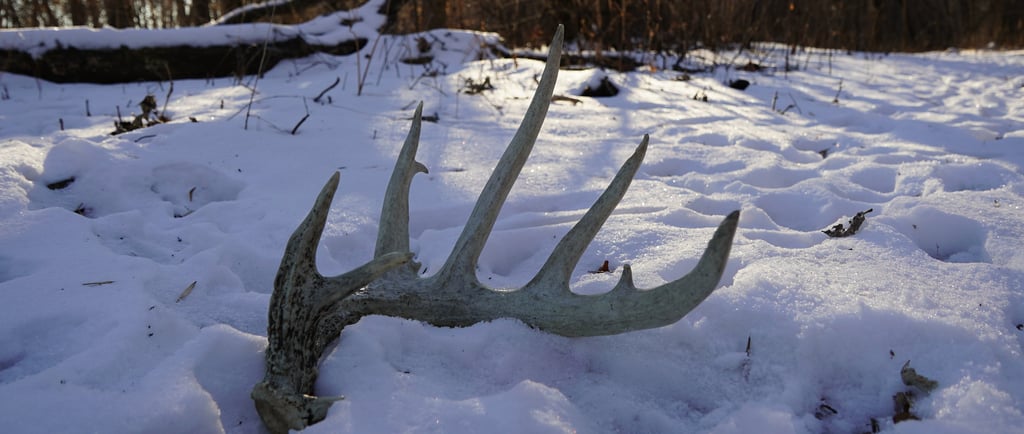

Shed hunting is always a fun time of the year. It can be a great opportunity to get out and enjoy the outdoors with family and friends. For some, it is an escape from a busy life into the peaceful world of whitetails. Or, maybe it is a pursuit for a particular set of antlers from your target buck from the previous season. Whatever it may be, follow these tips to find more sheds this year!
Timing is Key:
One of the biggest factors that determine shed hunting success is when you put boots on and hit the woods. Every single year, hunters claim that bucks are dropping early. While this may be true for a select few bucks, it is misleading to say that all bucks are dropping early. The biggest failure I see is hitting the woods too early. The last thing you want is to bump all the bucks off your land before they have even dropped. Especially if you go just slightly early because the antlers may drop on your neighbor's land since they are not returning for a while. As a good rule of thumb, too late is better than too early. It is better to find an antler that may have been chewed on than to not find it at all.
On the contrary, if you primarily shed hunt public land, then it is a race. Shed hunting on public land will require far more miles than on private land because you need to beat the other hunters. In this case, deer are being pushed all over, all the time, so an antler could drop at any point anywhere. Walking the same piece repeatedly will be necessary because you never know when and where the next person will walk and bump deer too. The conditions that influence when a buck will drop apply to anywhere a buck roams, public or private, so let's dive into it!
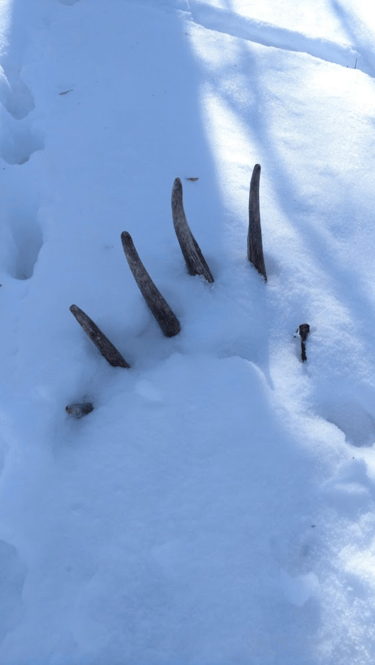

Stress:
Stress plays a large role in when antlers drop. This can come in different forms. The main source of stress is injury. If a buck suffered a major injury, he is likely going to drop sooner than the others. It requires energy to hold onto their antlers, and when they are injured, they need every bit of energy they can get. If the injury is severe enough, the buck may even drop before the hunting season ends. Along with physical stress, a lack of quality food can cause a buck to drop earlier than normal. Heavy snowfall can limit the amount of accessible food available for deer. Less food = less energy. Extremely frigid temperatures for an extended time also require energy to keep warm. Again, it takes energy to hold onto antlers. Now if the weather is unseasonably warm and snowfall is little to none, then you can expect bucks to hold onto their antlers longer because food will be more abundant and less energy will be required to stay warm. Keep these variables in mind before deciding when to hit the woods!
There are other factors that cause antler drop, such as testosterone changes, but that will depend on the individual buck. Now that you know what determines when a buck will lose his antlers, let’s discuss where you are going to find them!
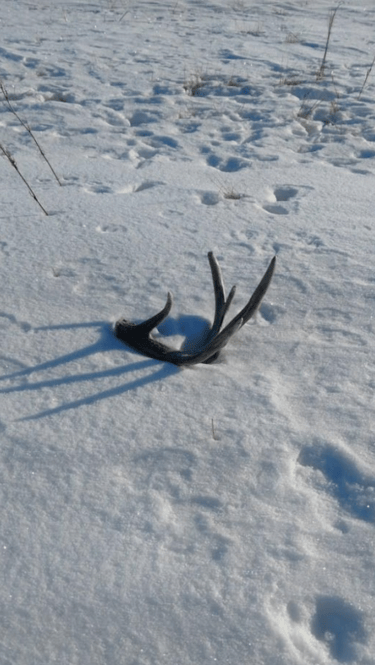
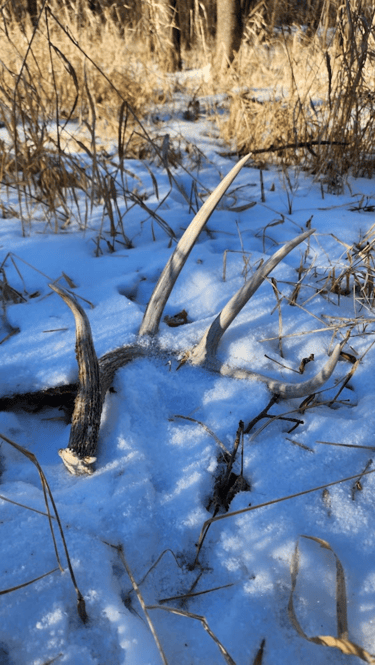

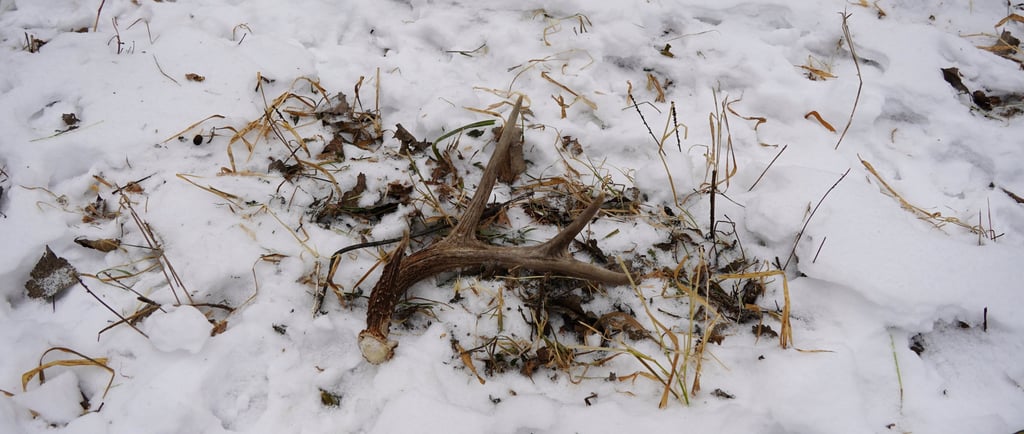

Food:
By far the best locations to find sheds is in or around food. Bucks are either in food or bedding for the majority of the day. Spending long hours feeding in the evening or at night makes it probable that they will drop near or in food. The food source will depend on your area. If you have anything left in your food plots, you can bet deer will be eating whatever remains. Standing food, corn in particular, can bring deer in from all over. Maybe it is a young clear cut on public land or a neighboring bait pile, whatever it is you need to find it. When you do, you will find sheds. Of course, if you go at the right time.
Keep in mind that food is extremely scarce in the winter, especially in northern regions of the country. The more scarce the food, the more deer you can expect in large groups to hit what is available. It may be the only option for miles. Thus, when you find it, you will be in a great shed drop location!
Bedding:
In the winter, when deer are not feeding, they are generally bedding. Aside from getting up to move a couple of feet to browse within their bedding area, deer do not move around much. Mainly, to conserve energy and survive, but also because they have no need to do anything else. This results in deer spending the majority of the day in their bedding area, therefore making it a great location to hunt for sheds.
In regards to bucks, this area still needs to be safe and away from does, but you can expect your bucks to be grouped together. You can find these buck bedding areas by applying depth of cover, as discussed in a previous article, but you also are going to require winter cover and food.
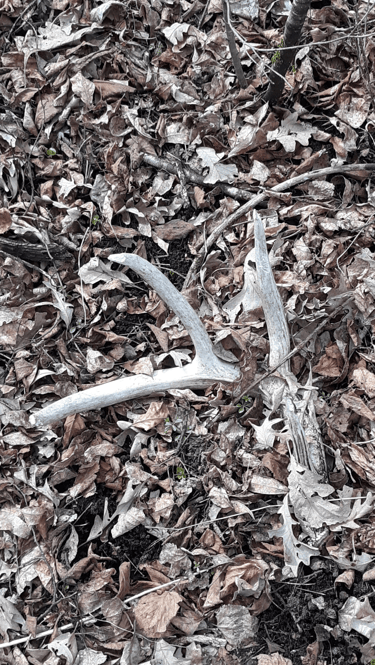

Winter Cover and Food?
To maximize your efficiency when looking for sheds, you must have both winter food and adequate winter cover. If you do not, you simply are not going to find any antlers because the bucks are not in the area. This is not necessarily a bad thing. While winter cover and fall cover can be the same in some locations of the country, they are not the same in all. For instance, in extreme northern areas, deer often travel numerous miles to deer yarding areas because they need winter cover and food. At times, they need the thermal protection of conifers to escape the piercing winds. It is important to note that if this location consists of a monoculture of conifers, deer will only use it as thermal protection and leave when conditions subside. Deer require browse in their bedding areas, and just conifers will not provide that.
If you do not have winter cover, you have nothing to worry about. Remember, as hunters, we ultimately only care about fall cover and fall habitat. As a habitat manager, this is when we are advancing deer to the next age class and preparing them for winter. The reality is, you can not house the deer 365 on your property, but you do not need to. So do not be discouraged if you do not find sheds on your land.
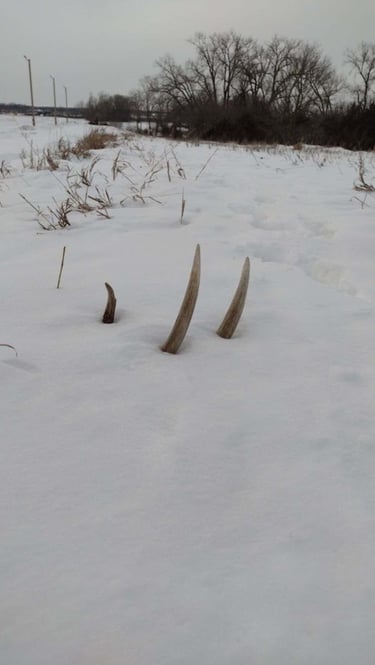

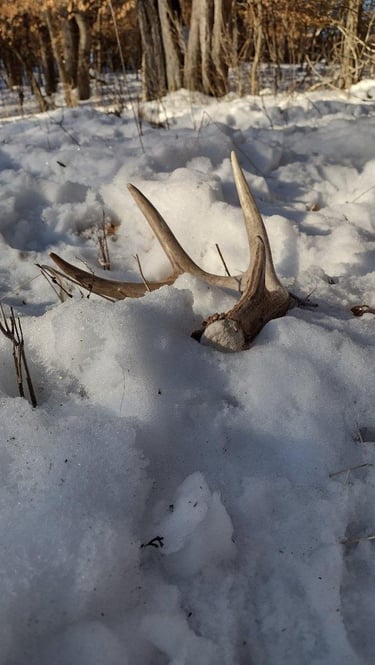
South Slopes?
Many shed hunters overhype the sunny side of the slope. While this sun is very beneficial and the deer love it, the wind direction and speed will have a greater impact on where they bed. Deer need to get out of the wind, regardless of what side of the slope they are on. You can expect them to bed wherever they are protected from the wind. A south-facing slope is still a great location for sheds, but keep in mind they are likely on the other sides of the ridge as well.
Other Locations:
Along with food and bedding, locations such as ditch, river, or fence crossings can be great locations to find sheds. Anytime a buck has to jump or bound is a chance to knock antlers loose. It could also be an overhanging limb over a heavy trail that could knock antlers off when traveling.
Post Rain and Cloudy:
By far my favorite time to shed hunt is after it has rained and on a cloudy day. The white of the antler pops significantly more than on a bright and sunny day. Oftentimes you can see them from a much farther distance, making you more effective and efficient.
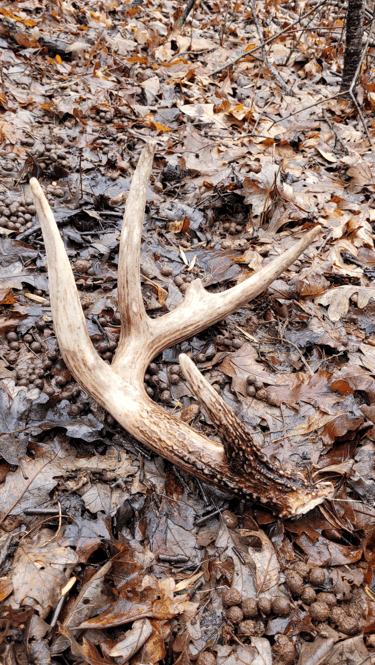

Conclusion:
Overall, if you combine all these factors together, your success will be greatly improved. The timing of antler drop is paramount in determining when you put the boots on. Make sure to be in locations that house deer in the winter with adequate food and cover and you will be successful. Shed hunting is a great time of the year, and I hope these tips help you find shed antlers this season!
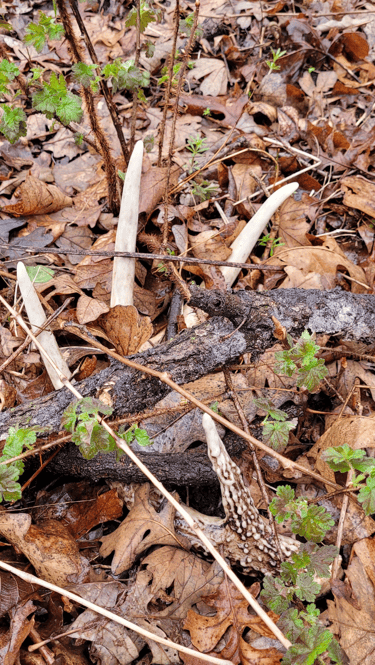

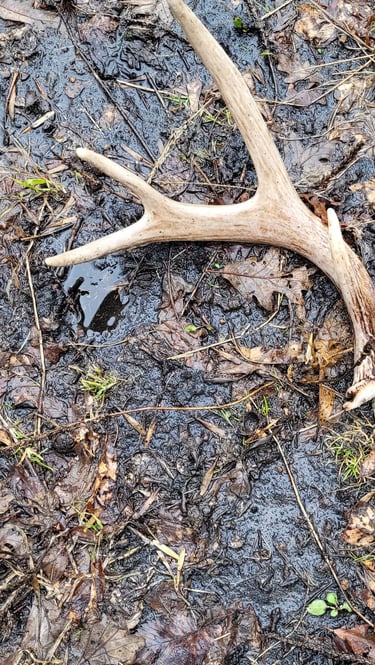

Copyright© 2025 WHITETAIL SYSTEMS AND SERVICES, LLC
